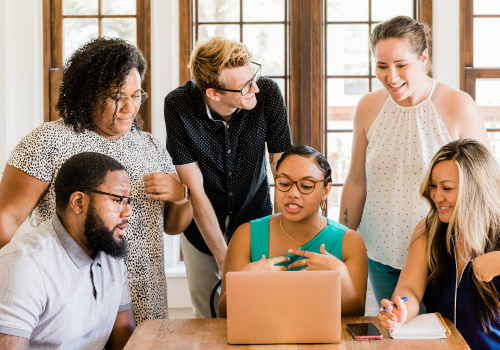5 Critical Sales Discovery Mistakes and How To Avoid Them
Making mistakes during sales discovery can be the difference between an impactful demo, or a demo that falls flat. Here are 5 critical sales...

Imagine yourself walking into a store, being greeted, and then being interrogated until the retailer finds exactly the product you want. Even if they had the best price, the right quality, and the item you were looking for, would you like to buy from that person? If you did buy from that person, would you feel comfortable being sold other products in the store? Many sales interactions can feel like interrogations for buyers, especially in software sales discovery sessions. Buyers, of course, anticipate questions, but top-performing sellers are doing much more than checking off lists of questions, they are humanizing the interaction.
Top-performing sellers interact with buyers personably while obtaining the information they need to find a solution to meet the organization's objective and the buyer's needs. If sellers use drill-style discovery, they may miss some key objectives. In this blog, we discuss humanizing discovery processes. We uncover so much in discovery. If we do it right, with a human touch, we can distill it into a better buyer experience, accelerate the buyer process, and build bigger deals.
Let's revisit the store scenario and reframe the engagement as if it were a top-performing seller approaching the buyer. A buyer walks into a store looking for your help, and you are there, in the correct section, and eager to help them. The engagement starts with simple questions. A seller can proceed with close-ended questions and dial into one product or outcome, or they can ask open-ended questions to seek answers about what motivates the need for the product, the visit to the section, and to connect with the buyer.
Open-ended questions that begin with “why,” “how,” or “what” and require a buyer to provide more than a single-word answer, whereas close-ended questions can be answered with a simple “yes” or “no.” When buyers answer open-ended questions, they reveal more about their motivations and provide insights that sellers can use to connect, expand a solution, or refine their understanding for the next customer engagement.
What if you were in the buyer's shoes and a seller asked you a number of open-ended questions but was clearly not listening to your answers? Open-ended questions only reveal buyer motivations when the seller is present. Making eye contact, using receptive body language, and asking clarifying questions will take a seller much further than asking the "Top Ten Discovery Questions" from your favorite sales trainer. These nonverbal attention cues are critical in providing the buyer with a more humanized experience.
Now that you have the buyer's attention, you can grow the connection by leading the engagement with empathy by actively giving them your attention. Showing empathy can be expressed verbally and also nonverbally through body language and facial expressions. Your buyer needs to know that you care about their desired outcomes and motivations. You can ask clarifying questions, share a story related to their need, or use a simple understanding phrase.
Objections in discovery can initially feel like an inflection point in an interaction or conflict. This can look like a moment of hesitation or genuine concern with a product; still, it can quickly turn into a bounty of new insights when open-ended questions are used. Objections can be the seeds of incredible discovery opportunities for closing a sale. How do we better understand buyer motivation, gain trust, and uncover information in the face of objections? Each time a buyer speaks, they are refining their needs. By asking open-ended questions, being present, and showing empathy, we continually refine our understanding to meet their needs better.
Buyer insights and motivations inform future engagements, presentations, and proposals. Failing to incorporate discovery findings into future presentations and proposals is one of the biggest mistakes in sales organizations. Sales teams must build sturdy bridges to communicate discovery learnings to ensure the presentation or proposal represents organizational objectives and motivations.
One way 2Win teaches teams to develop discovery soft skills is to reflect discovery findings using a customer-focused story to connect the organizational goals with the deal strategy and proposed solutions. Telling a customer-focused story is a great way to demonstrate your understanding of the buyer's needs, and how you can fulfill them, in a way that builds connection. Buyers need to feel their fundamental motivations and priorities are understood from discovery to closing. We emphasize cultivating professional empathy throughout our coursework as a foundation of our teachings and have open-ended questioning techniques that show clients you can listen to their concerns, not just diagnose or bring solutions.
The Discovery2Win program delivers frameworks and masterclass-style training that give sales teams tools to find the treasure in the objections and build relationships out of objections. Our CDIM framework is proven, and we can integrate exercises into any sales methodology. If you have an objection, we will find an opportunity.
Learn more about Discovery2Win here.

Making mistakes during sales discovery can be the difference between an impactful demo, or a demo that falls flat. Here are 5 critical sales...

So, you've conducted fruitful discovery and collected a lot of information about the client... Now what? We don't just do discovery for fun; we do...